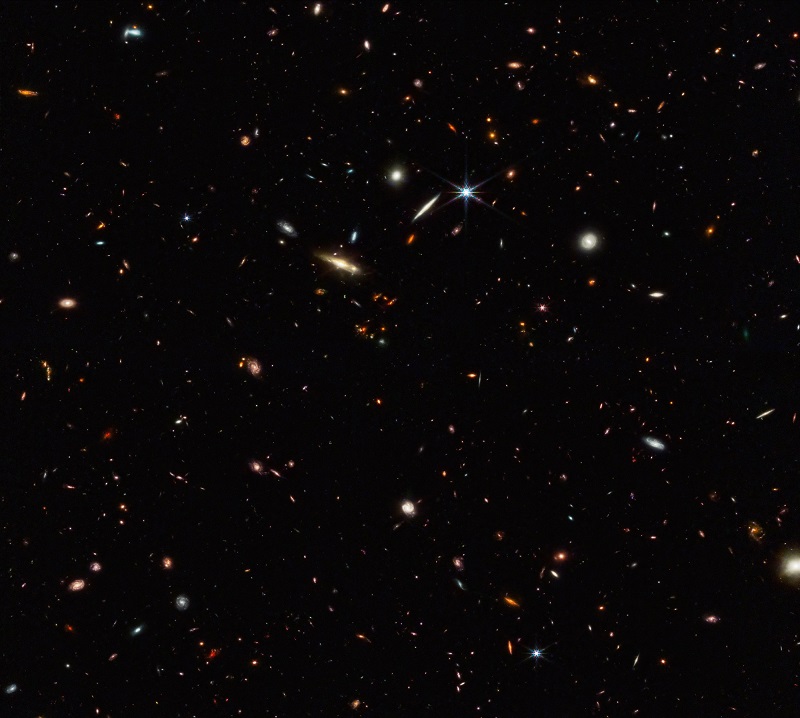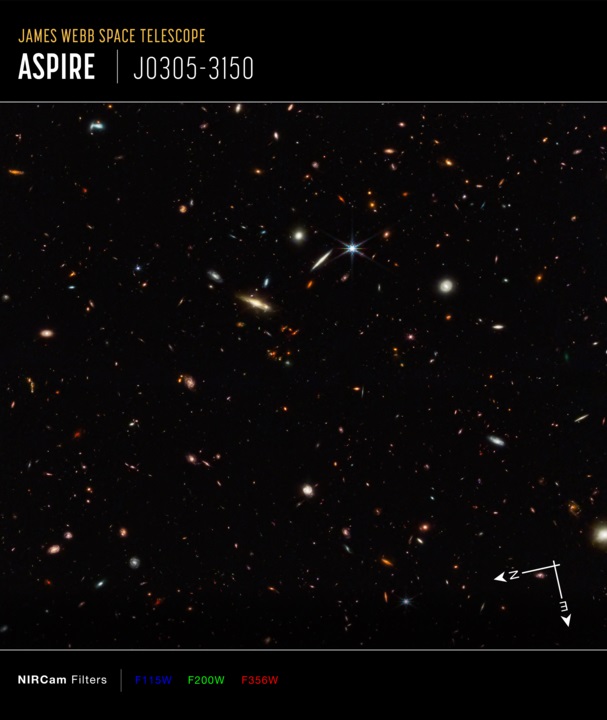A filament of 10 galaxies seen just 830 million years after the birth of the universe Woven across our universe is a weblike structure of galaxies
A filament of 10 galaxies seen just 830 million years after the birth of the universe
Woven across our universe is a weblike structure of galaxies called the cosmic web. Galaxies are strung along filaments in this vast web, which also contains enormous voids, reported NASA.
Now, astronomers using the James Webb Space Telescope have discovered an early strand of this structure, a long, narrow filament of 10 galaxies that existed just 830 million years after the big bang.

The 3 million light-year-long structure is anchored by a luminous quasar, a galaxy with an active, supermassive black hole at its core. The team believes this early thread of the cosmic web will eventually evolve into a massive cluster of galaxies, reported NASA.
The same study also probes the properties of eight quasars in the young universe. Scientists determined that the galaxies’ central black holes, which existed less than a billion years after the big bang, range in mass from 600 million to 2 billion times that of our Sun. They are still working to explain how these black holes could grow so large so fast.

Galaxies are not scattered randomly across the universe. They gather together not only into clusters, but into vast interconnected filamentary structures with gigantic barren voids in between. This “cosmic web” started out tenuous and became more distinct over time as gravity drew matter together, reports NASA.
Astronomers using NASA’s James Webb Space Telescope have discovered a thread-like arrangement of 10 galaxies that existed just 830 million years after the big bang. The 3 million light-year-long structure is anchored by a luminous quasar, a galaxy with an active, supermassive black hole at its core.
The team believes the filament will eventually evolve into a massive cluster of galaxies, much like the well-known Coma Cluster in the nearby universe.

“I was surprised by how long and how narrow this filament is,” said team member Xiaohui Fan of the University of Arizona in Tucson. “I expected to find something, but I didn’t expect such a long, distinctly thin structure.”
“This is one of the earliest filamentary structures that people have ever found associated with a distant quasar,” added Feige Wang of the University of Arizona in Tucson, the principal investigator of this program.
This discovery is from the ASPIRE project (A SPectroscopic survey of biased halos In the Reionization Era), whose main goal is to study the cosmic environments of the earliest black holes. In total, the program will observe 25 quasars that existed within the first billion years after the big bang, a time known as the Epoch of Reionization, reports NASA.

“The last two decades of cosmology research have given us a robust understanding of how the cosmic web forms and evolves. ASPIRE aims to understand how to incorporate the emergence of the earliest massive black holes into our current story of the formation of cosmic structure,” explained team member Joseph Hennawi of the University of California, Santa Barbara.
The James Webb Space Telescope is the world’s premier space science observatory. Webb will solve mysteries in our solar system, look beyond to distant worlds around other stars, and probe the mysterious structures and origins of our universe and our place in it.
Webb is an international program led by NASA with its partners, ESA (European Space Agency), and CSA (Canadian Space Agency).


